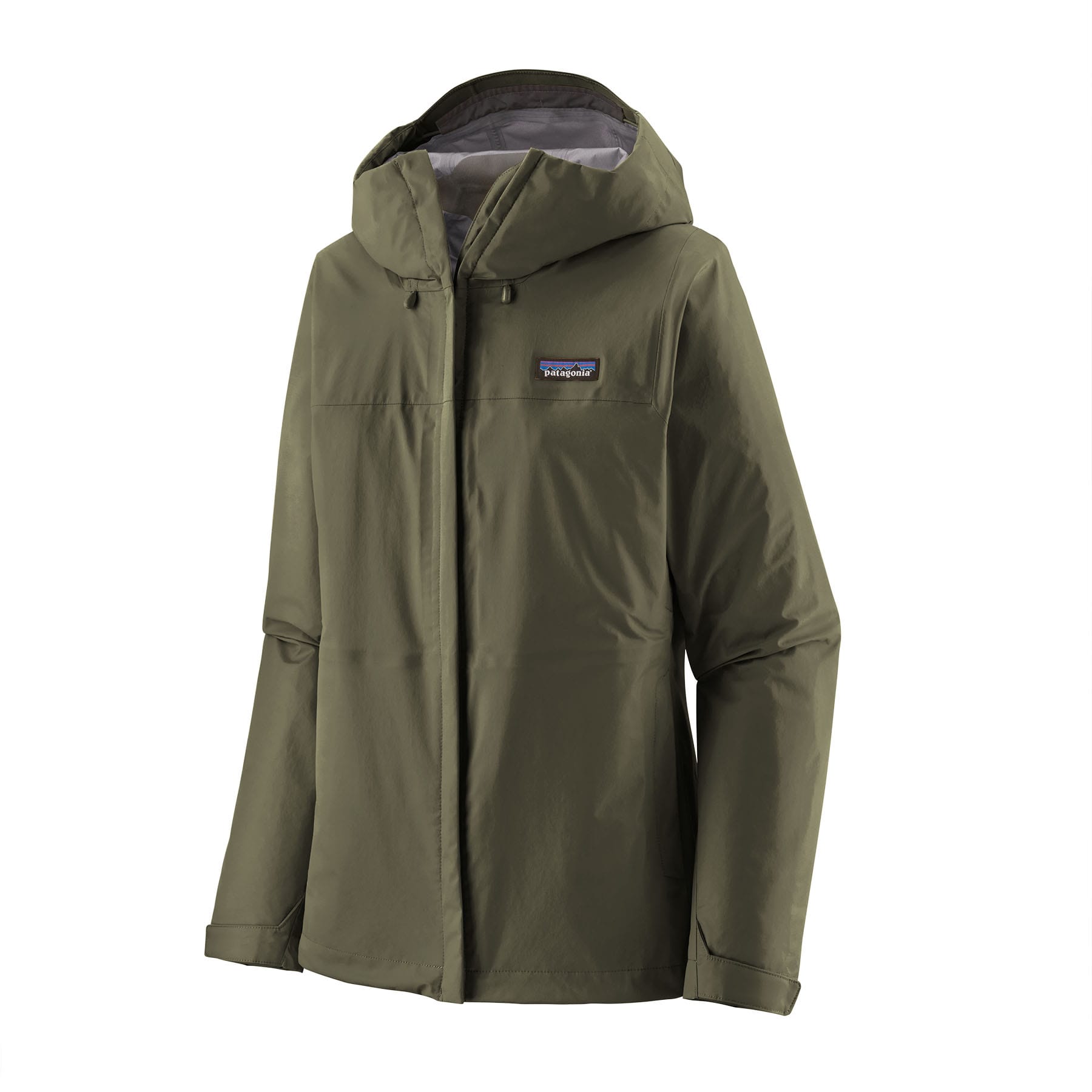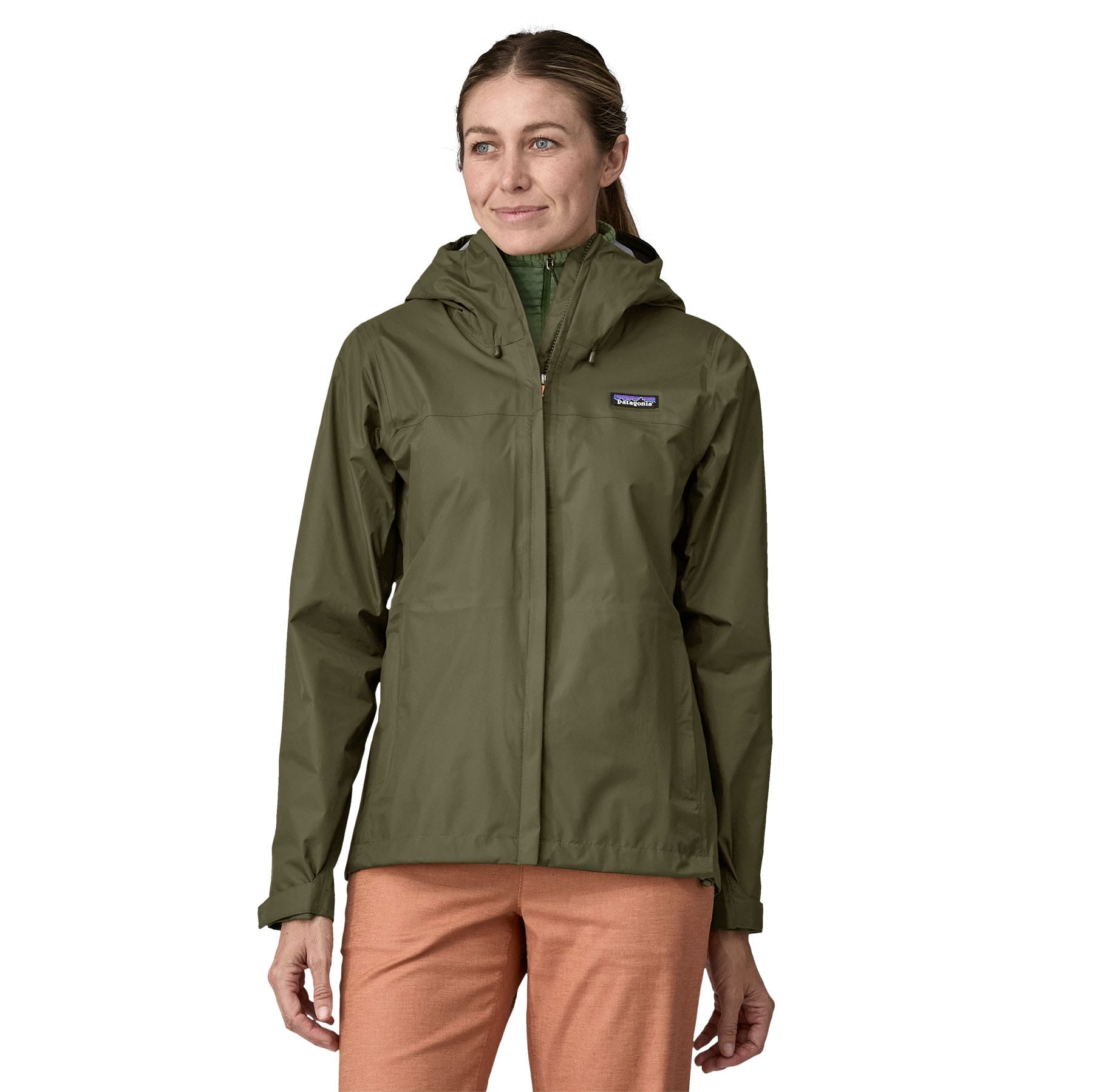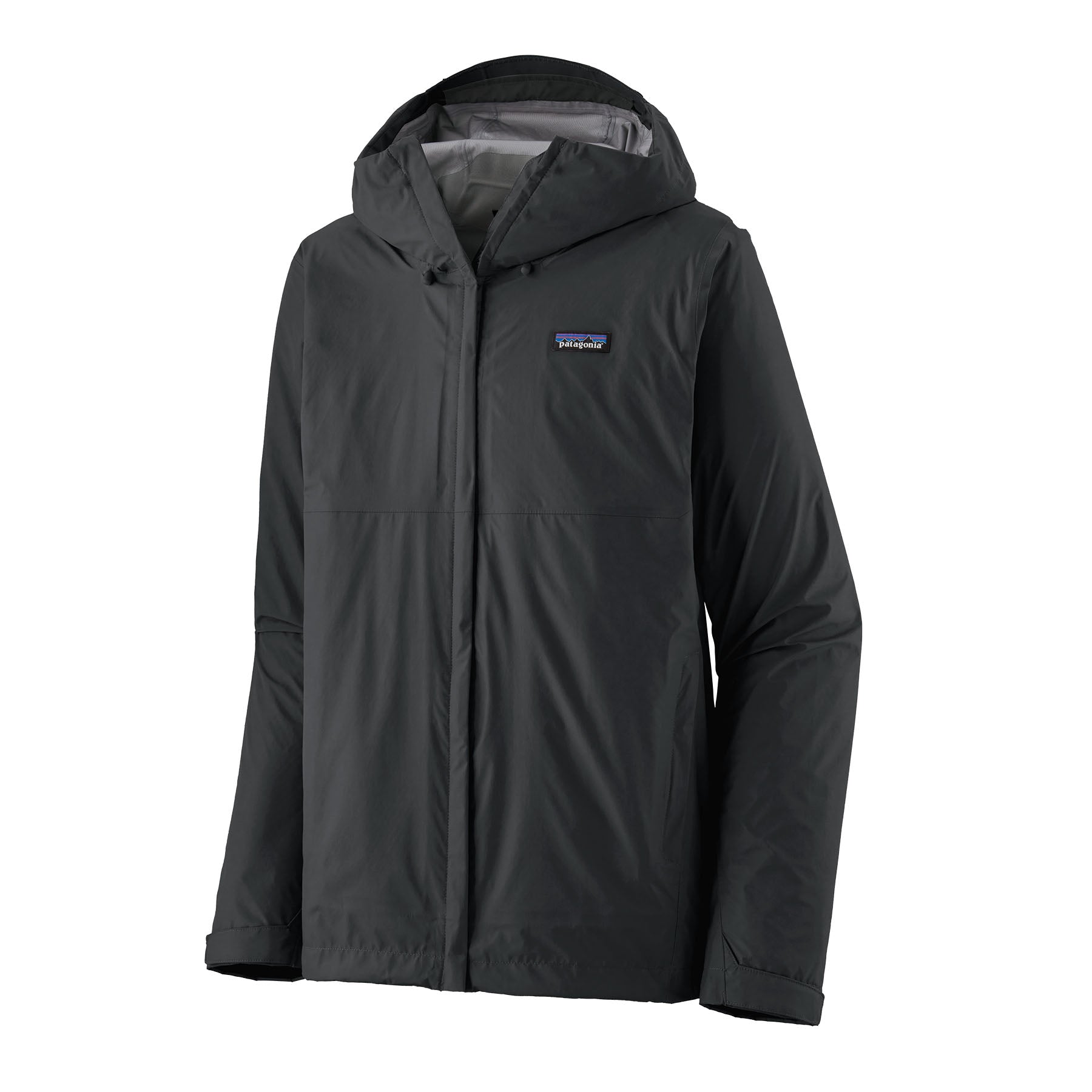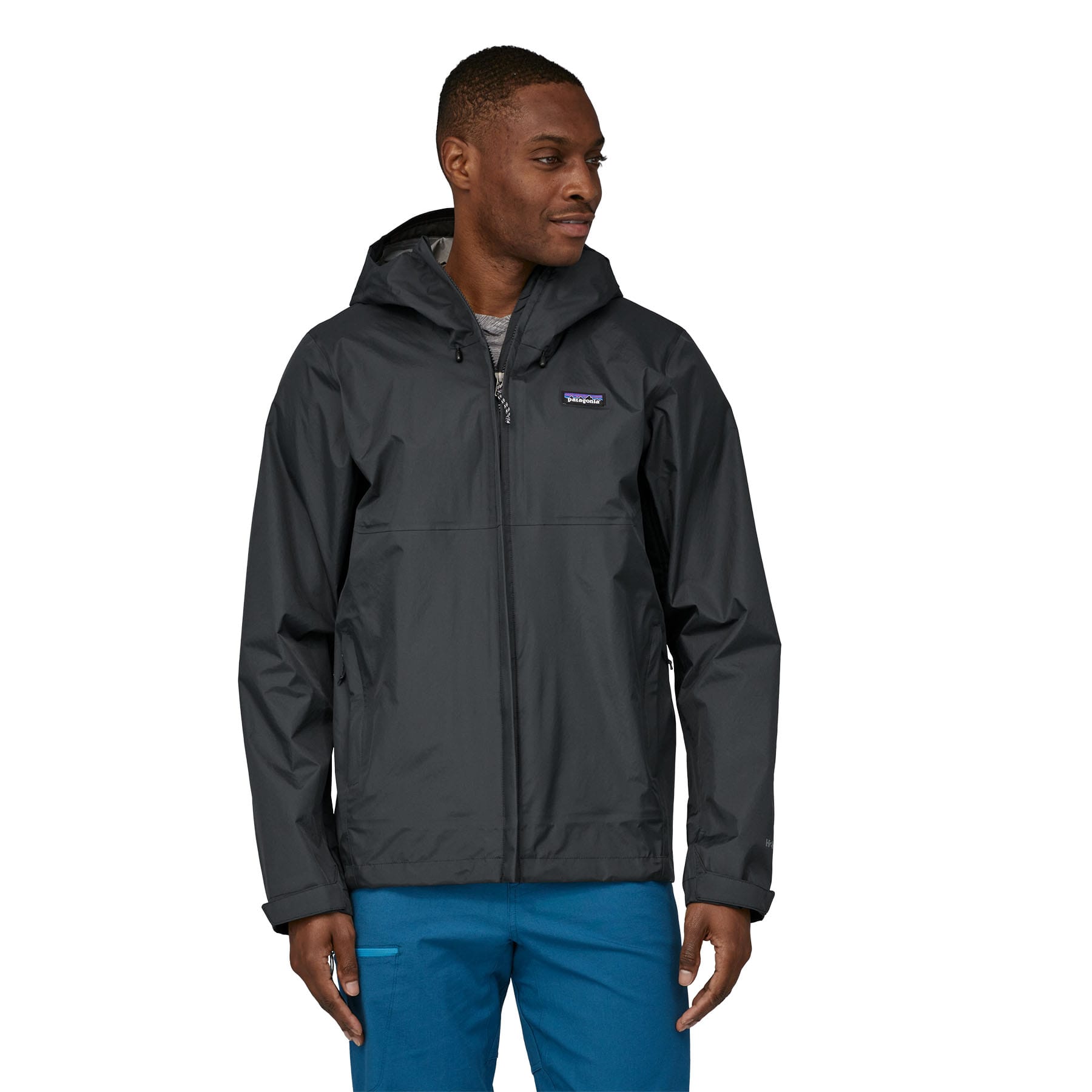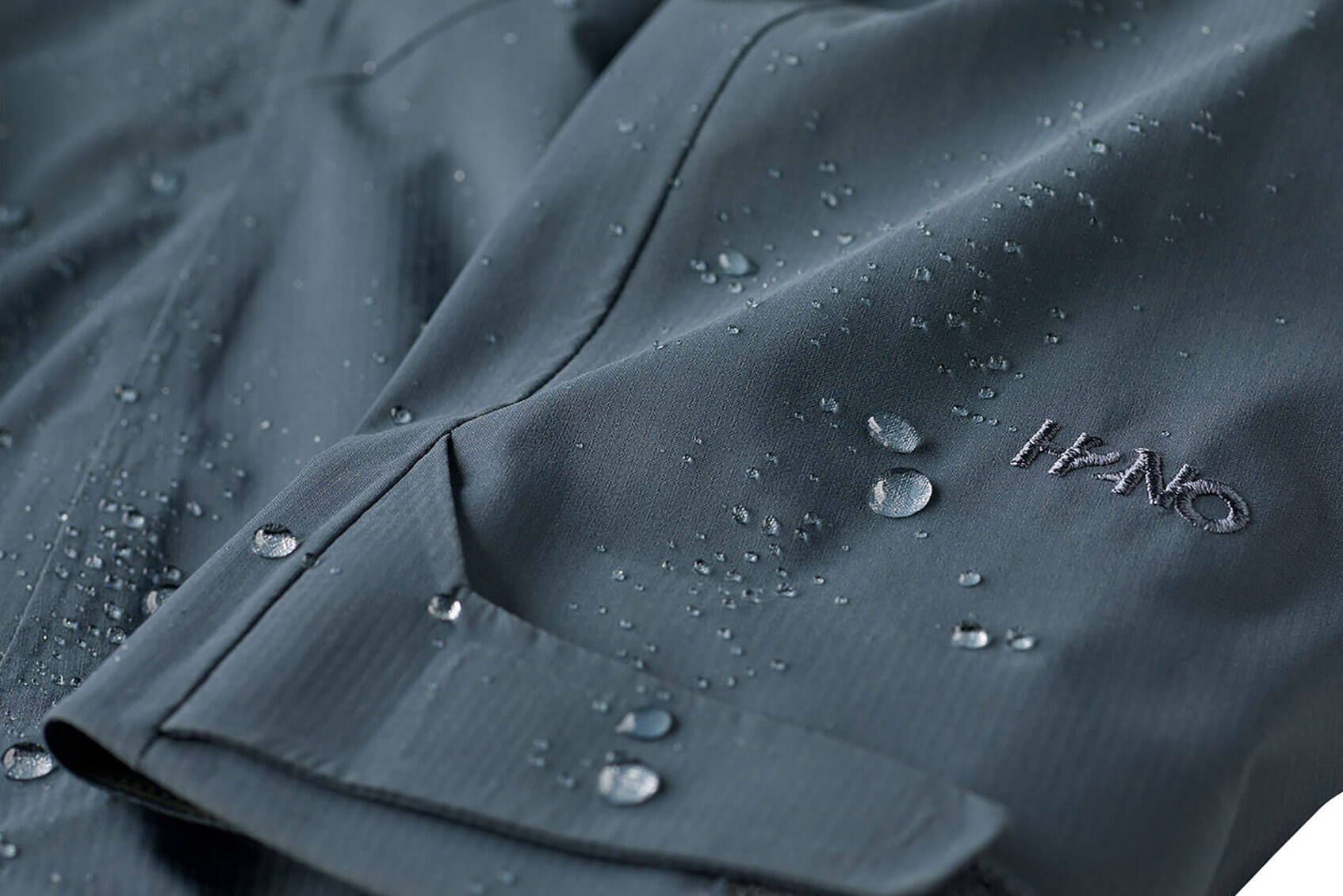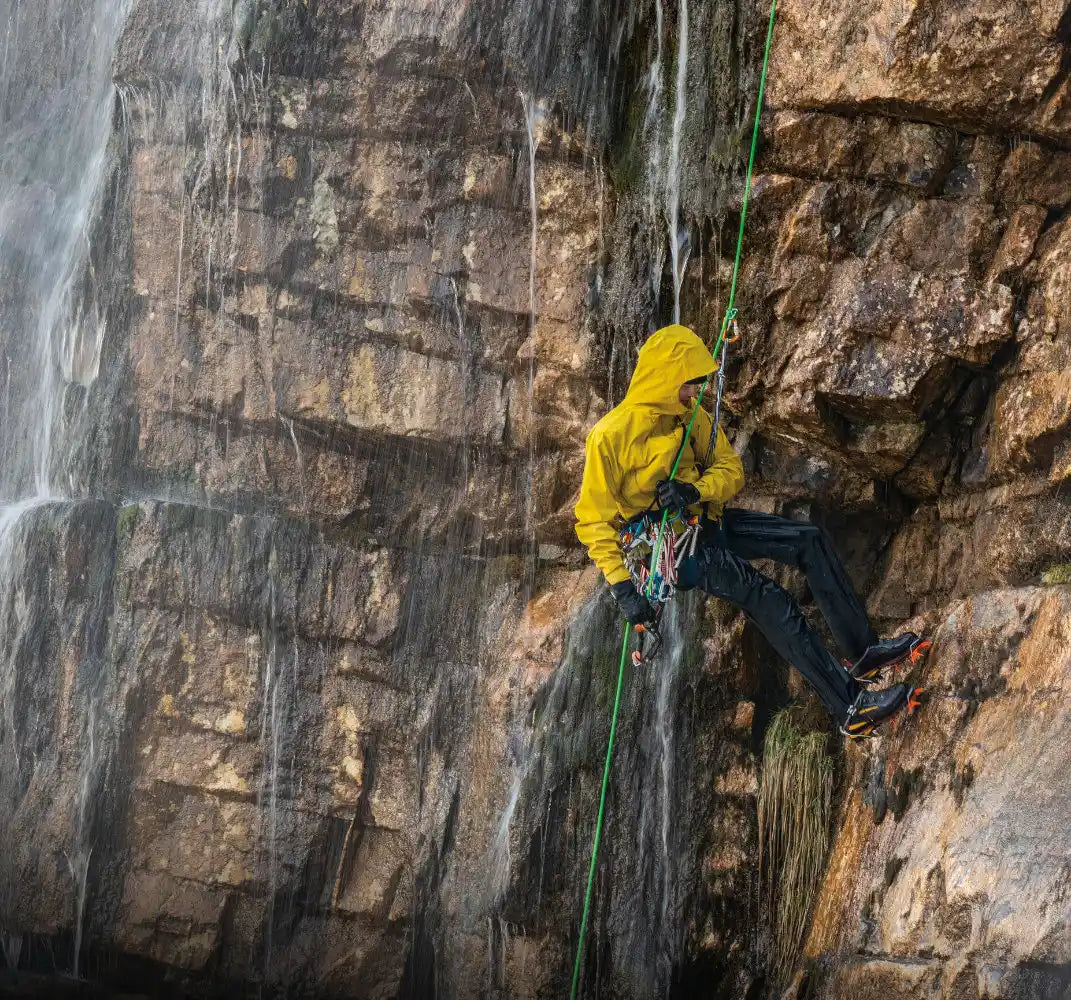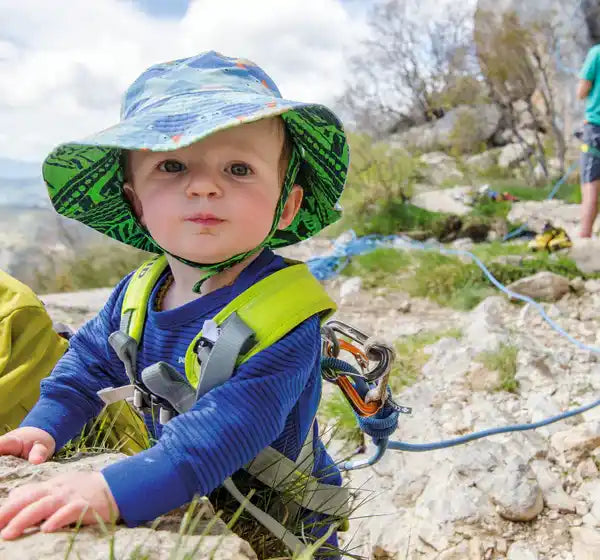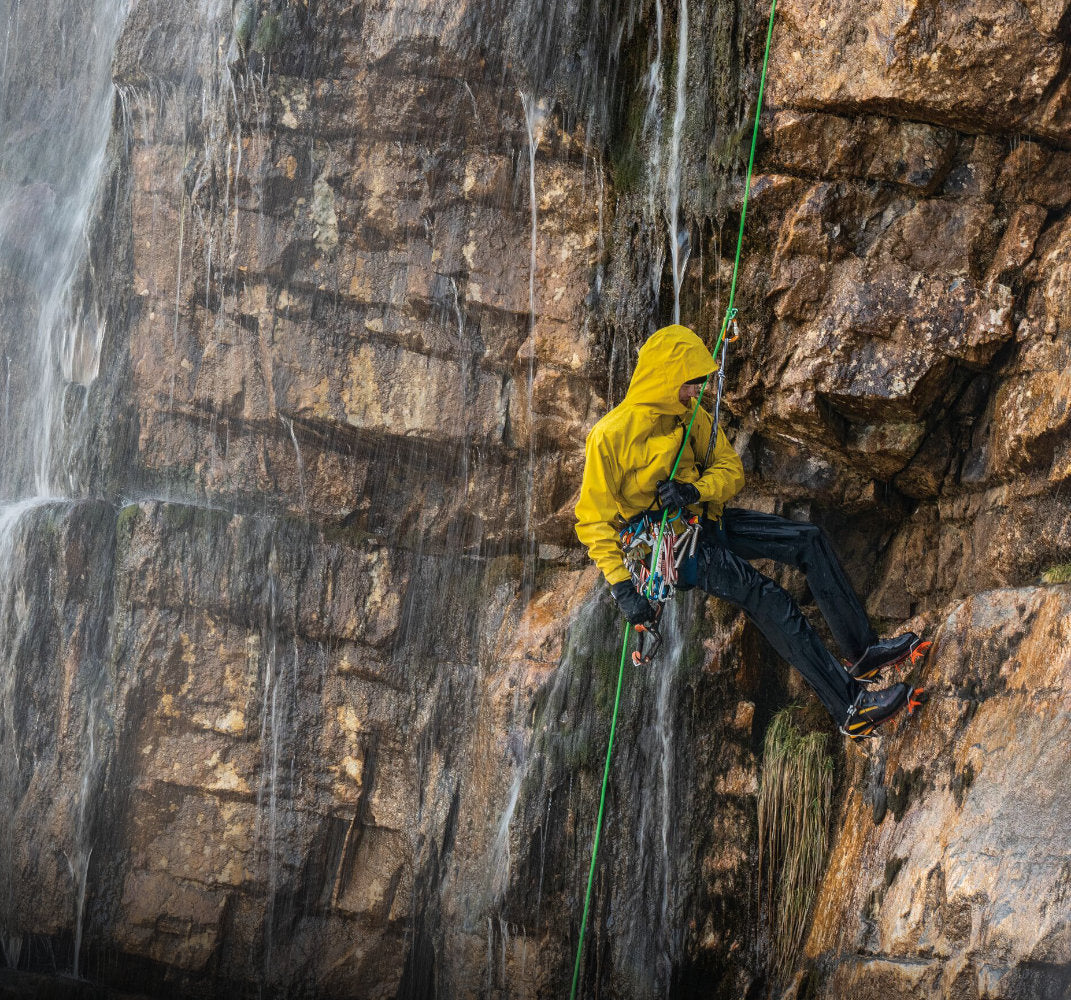
H₂No® Performance Standard
The H₂No® Performance Standard is Patagonia’s benchmark
for waterproofness, breathability and durability.
Why?
A lot of waterproof products keep you dry and comfortable—until they don’t. Think delamination, decreased durability or a drop in breathability, which is not helpful if you’re sweaty on a climb or worse, suffering through a soggy jacket in sub-zero conditions.
So when Patagonia started building breathable waterproof products, they wanted to create gear that performs at the highest level and for the long haul.
To ensure every product upholds their performance and longevity standards, they established a benchmark along with a series of tests for waterproofness, breathability and durability rigorous enough to be backed by our Ironclad Guarantee.
Where We Are
Patagonia's H₂No® Performance Standard is not a technology or specific material—it’s an extensive, years-long testing process that every single one of our waterproof materials and waterproof products must pass both in the lab and in the field to earn the H₂No title. It’s intentionally demanding so that they say yes only to products that guarantee long-lasting waterproof performance and breathability.
While lab tests can’t perfectly mimic Mother Nature, they are extremely useful in helping us develop their H₂No fabrics and ensuring they meet four major performance points: waterproofness, breathability, surface repellency and long-term durability.
Patagonia also work closely with a select group of testers chosen for their sports expertise who are more than happy to push the materials to the limits and poke holes in our designers’ lofty ideas. They help Patagonia confirm that the materials, design and construction are top-of-the-line for a wide variety of activities, whether it’s alpine pushes, long days skiing or getting caught in the rowdiest of thunderstorms. Here’s a more detailed look into the H₂No process.
PHASE 1: LAB-TESTING THE MATERIAL
Waterproofness
To measure complete waterproofness, Patagonia subjects their fabrics to a “Killer Wash,” their wet flex and abrasion test that simulates up to 30 years of use in drenching conditions. They gauge this by putting pressure—in the form of a cylinder of water measured in millimeters—on the fabric to see how far they can push the limits before the fabric starts leaking. The first Killer Wash tests are performed at 20,000mm of water and then again to ensure the fabric maintains a 10,000mm water rating. This means they only select fabrics that will meet industry standards for waterproofness even after extensive use.
Breathability
Breathability means a fabric must simultaneously repel water from the outside while allowing heat, sweat and moisture to escape from the inside. They test this by measuring a fabric’s Moisture Vapor Transmission Rate (MVTR) and Resistance to Evaporative Heat Transfer (RET), tests that measure how effectively vapor and air can pass through a waterproof material under different conditions, from fly fishing to alpine climbing. They then retest breathability after Killer Wash to ensure that the material performs all of the above after simulated prolonged use.
Surface Repellency
Even if water isn't getting through the waterproof membrane, a saturated outer fabric can reduce breathability and comfort. That’s why surface repellency—how well water beads and rolls off face fabric before the moisture ever reaches the interior coating or lamination—is so important. To test that, they spray the materials with water at varying intensity levels to simulate both light and heavy rain, measuring the resulting beading on a 1–5 scale. Then they retest after Killer Wash to ensure that materials still repel and bead water after extensive use. (Love your shell, and it will love you back: You can refresh surface repellency through normal wash and care. Learn more here.)
Long-Term Durability
By running tests before and after Killer Wash, they get an excellent sense of how a material will perform after years of use, not just in terms of waterproof performance but also in physical construction. They're looking out for delamination, membrane degradation and more. Beyond waterproof durability, they also extensively test the physical durability of our fabrics, measuring tensile strength, ripping resistance and abrasion resistance to ensure they can keep up, no matter the forecast or terrain.
PHASE 2: FIELD-TESTING THE MATERIAL
Once a material passes their many lab tests, it's adapted into a`n existing product design—say, a prospective material sewed into a Triolet Alpine Jacket silhouette—so the field testers can help them understand real-world comfort. Sometimes they even incorporate two different materials into one design so the testers can compare performance more directly. Every material Patagonia considers for use gets at least two months of continual use in the field before it’s even considered for use in a product.
PHASE 3: LAB-TESTING THE DESIGN
Once an individual material passes the lab and field tests and is adopted into a new product, they run more tests to make sure that the material and design meet Patagonia's (very high) standards. They’re analyzing:
Durability and construction:
Seams, tapes and trims need to be as durable as our fabrics, so the final garments must pass additional lab tests, like ensuring seams don’t leak before and after a Killer Wash.
Design execution and function:
All of their products are carefully reviewed by the Design, Quality and Repair teams to ensure you never have to deal with issues like waterlogged zipper garages. They also verify that key elements can be easily repaired, so you can keep your gear in play and out of landfills.
Prototype testing:
Patagonia calls on our ambassadors and other testers to try out individual protypes. They start with one version, review their feedback, make changes and repeat this whole process until we get the most effective and reliable waterproof version of the product.
PHASE 4: FIELD-TESTING THE FINAL DESIGN
After the prototyping process is complete, they put dozens of samples of the final design into the field with their global ambassador team for several months of field testing, ensuring that the final product is ready for our customers. Think of it as the final sniff test.
What’s Next
Beyond rigorously testing (and re-testing) their waterproof materials, they are actively working on ways to reduce the impact waterproof products have on the environment. That means creating the highest level of performance products without relying on petroleum-based materials or perfluorinated chemicals(PFAS/PFCs), water-repellent compounds used in DWR take thousands of years to degrade and can harm human and animal health. By 2025, they’re converting all of their durable water-repellent membranes and finishes to non-fluorinated alternatives, including those for outerwear, insulation pieces and midlayers.












































